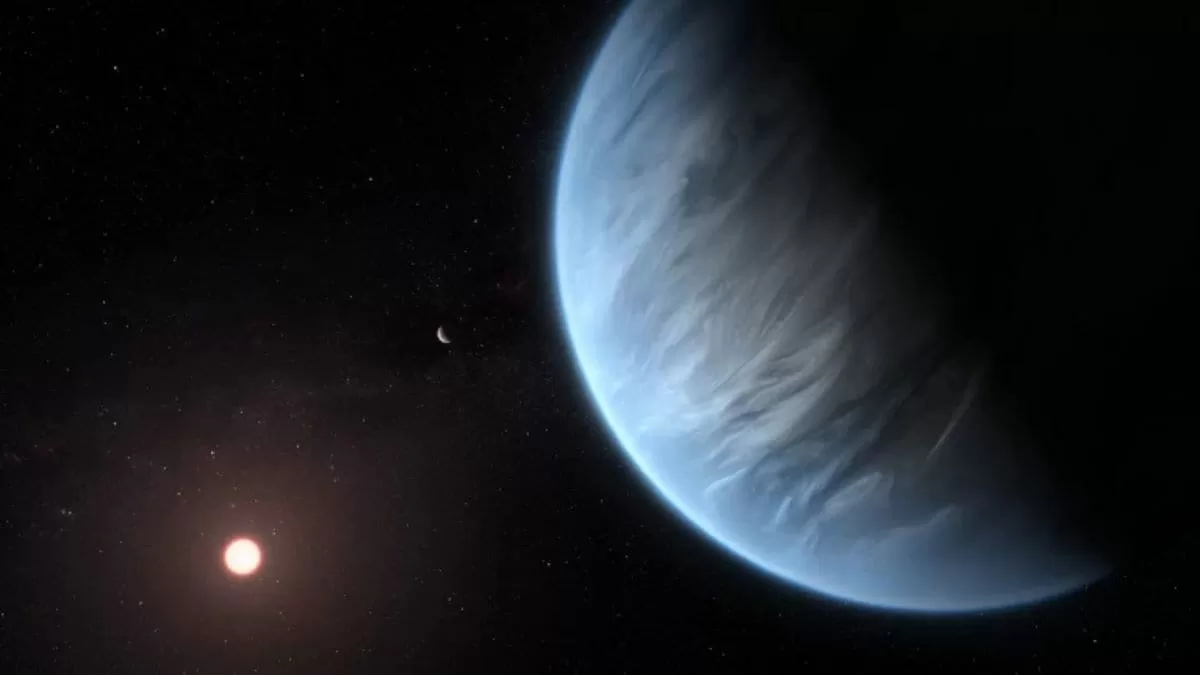The scientific community has been buzzing with excitement and curiosity after a team of experts from the prestigious University of Cambridge, UK, made a groundbreaking announcement. According to their research, there are strong indications of extraterrestrial life on a distant planet named K2-18 b.
The discovery was made possible through the use of advanced technology and a team of highly skilled scientists who have been working tirelessly for years. Their findings have been published in a renowned scientific journal, causing a stir in the scientific world.
The team of scientists has identified the presence of DMS (dimethyl sulfide) and DMDS (dimethyl disulfide) molecules in the atmosphere of K2-18 b. These molecules are known to be produced by living organisms, and their presence in the planet’s atmosphere is a strong indicator of the existence of life.
This discovery has opened up a whole new realm of possibilities and has sparked widespread discussions among experts and enthusiasts alike. The mere thought of life on another planet has always been a subject of fascination and wonder for humans. And now, with this groundbreaking discovery, the possibility seems more real than ever before.
However, as with any groundbreaking discovery, there have been some skeptics and critics who have raised questions about the authenticity of the claims. Some have argued that the presence of DMS and DMDS molecules does not necessarily mean the existence of life. They suggest that these molecules could have been produced through non-biological processes.
The team from the University of Cambridge has acknowledged these concerns and has assured that their research is based on extensive data and thorough analysis. They have also invited other experts to conduct further research and verify their findings.
Despite the skepticism, the discovery of DMS and DMDS molecules on K2-18 b is a significant step towards understanding the possibility of life beyond Earth. It has also raised questions about the habitability of the planet and the potential for future exploration.
K2-18 b is approximately 110 light-years away from Earth and is classified as a super-Earth, with a mass and radius larger than that of our planet. It is located in the habitable zone of its star, which means that it has the potential to support liquid water on its surface, a crucial element for the existence of life.
The presence of DMS and DMDS molecules in the planet’s atmosphere has also sparked discussions about the type of life that could potentially exist on K2-18 b. Some experts suggest that it could be microbial life, while others believe that it could be more complex organisms.
This discovery has also highlighted the importance of continued research and exploration of other planets and their atmospheres. It has opened up new avenues for scientists to study the conditions necessary for the existence of life and the potential for finding it in other parts of the universe.
The team from the University of Cambridge has already started planning for further research and analysis, including the use of more advanced technology and techniques. They hope to gather more evidence to support their claims and answer the questions raised by skeptics.
The discovery of DMS and DMDS molecules on K2-18 b has captured the imagination of people worldwide and has reignited our curiosity about the possibility of life beyond our planet. It is a testament to the dedication and hard work of the team of scientists from the University of Cambridge who have pushed the boundaries of human knowledge and opened up a new chapter in the search for extraterrestrial life.
In conclusion, the announcement made by the expert team of scientists from the University of Cambridge is a significant milestone in the field of astrobiology. It has provided strong evidence of the existence of life on a distant planet, igniting our imagination and inspiring us to continue exploring the vastness of the universe. This discovery reminds us that there is still so much to learn and discover, and the possibilities are endless.

